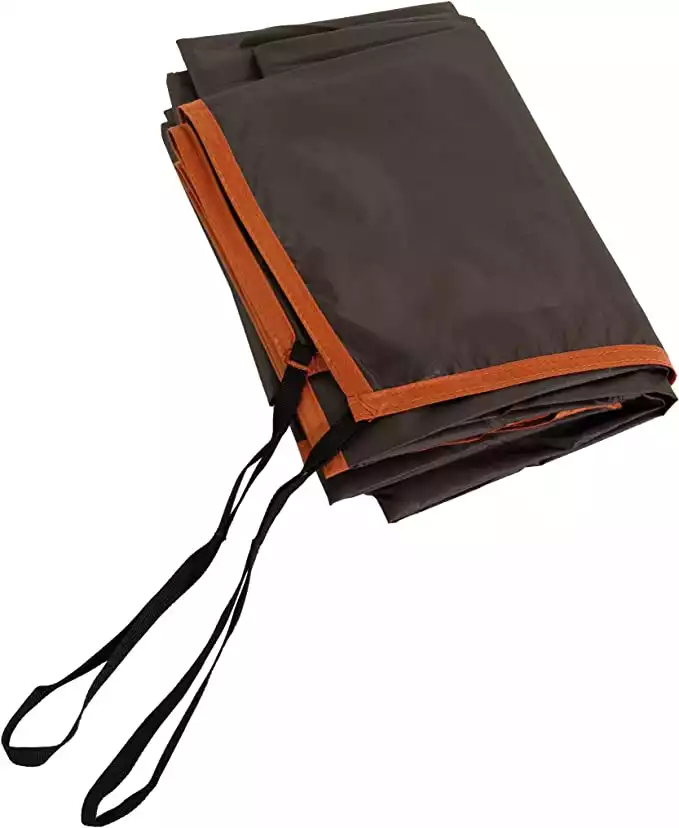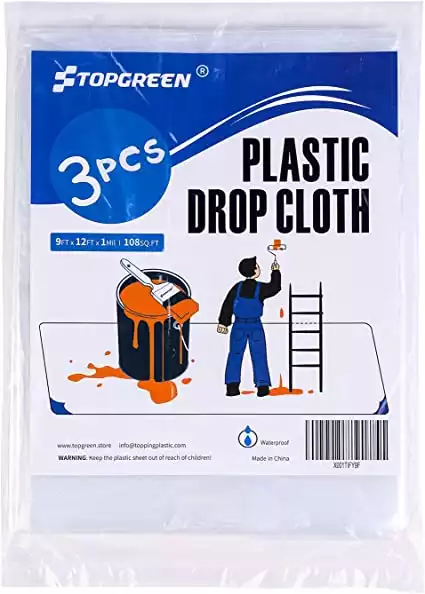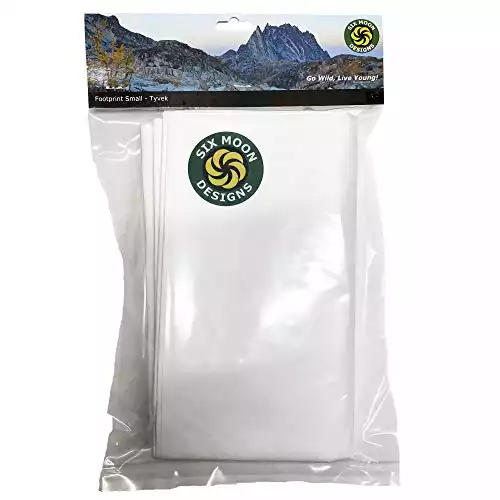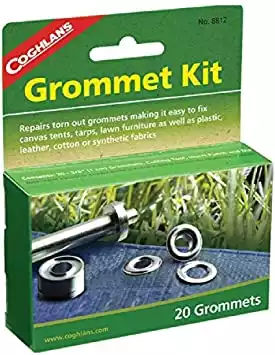Placing a tarp under your tent can provide protection and extra waterproofing for your shelter in harsh environments. However, there’s no requirement that you do so, especially in nice weather. Nevertheless, if you do want to use a tarp, be sure to get one that’s portable enough for your adventures.
If you spend enough time outside, at some point, you’ll likely see someone putting a tarp down under their tent. But, is this really necessary? Do you really need to put a tarp under your tent?
While you don’t need to do so, using the tarpaulin under tent system is a popular way to protect your shelter from damage at night. Tarps and tent footprints can also provide extra weatherproofing, protecting you and your gear from the wet ground under your tent.
That being said, if you’ve never used a tent footprint or ground cloth, you probably have quite a few questions about how it all works. To help you out, we’ve created this guide to tent footprints to get you started.
Up next, we’ll walk you through everything you need to know about using a ground tarp for tent camping. That way, you can have an amazing adventure in the mountains, regardless of the conditions.
The Tarpaulin Under Tent Debate: Do I Really Need A Ground Cloth?
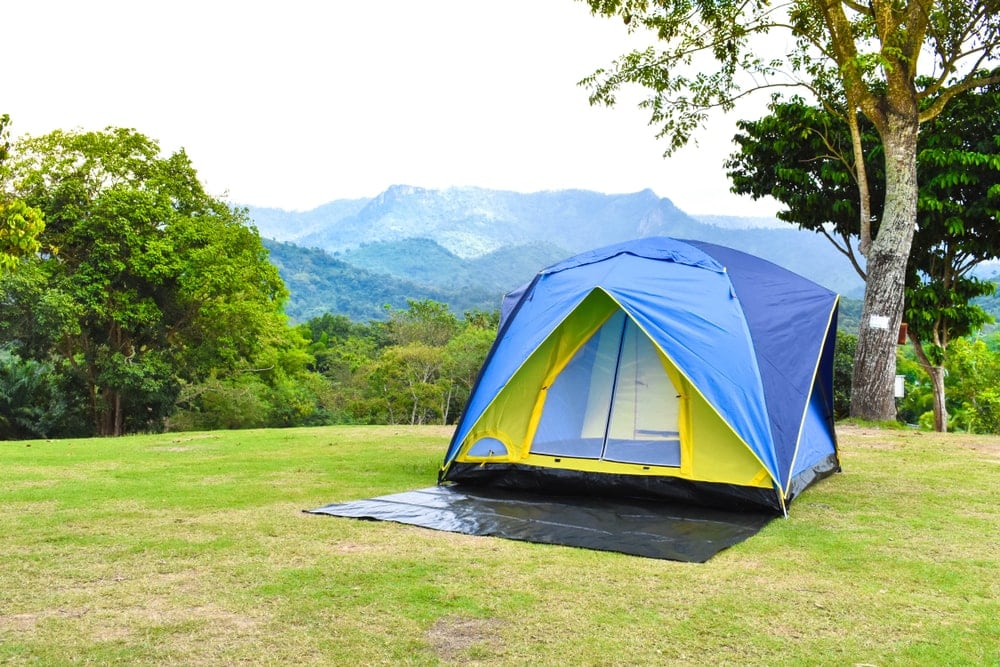
The tarpaulin under tent debate is about as old as camping itself. While some campers swear by ground cloths others wouldn’t dare be caught in the mountains with them.
So, what gives? Do you really need to use a tarp under your tent?
Well, while you technically don’t need a tent footprint, there are some great advantages to using one during your adventures. At the same time, though, carrying a ground tarp while camping isn’t without its drawbacks.
To settle this debate once and for all, let’s look at some of the advantages and disadvantages of using tent ground covers:
Advantages Of Using Tarps Under Tents
A tarp can be a great addition to most camping gear lists, especially if you’re concerned about staying dry in a storm. Here are some of the advantages of using a tarp under your tent:
- Protection For Your Tent. Perhaps the biggest benefit of using a ground cloth is the fact that a tarp provides a whole lot of protection for your tent. Think about it: Your tent floor sees a lot of wear and tear while you’re outside, especially if you’re camping on rough and rocky terrain. So, a ground cloth can help protect your tent from abrasions and damage. As a result, a tent footprint can make your tent last longer, saving you money in the process.
- Increased Waterproofing. If you’re camping in a heavy rainstorm, at some point, the ground around you is going to get soaking wet. When this happens, the chances that water will be able to seep through the floor of your tent tend to skyrocket. Therefore, using a ground cloth under your tent can help prevent water from soaking through to your sleeping area. It also prevents from building up too much moisture inside your tent.
- Easier Post-Trip Cleaning. Since a tent footprint serves as a barrier between your tent and the ground, it also helps to keep your gear clean while you’re outside. Although your ground cloth is likely to get very muddy and dirty, it’s much easier to rinse off a tarp than it is to clean a tent. Therefore, using a tarp can make your post-trip clean-up faster and more efficient.
- Added Insulation. Although tarps aren’t exactly world-class insulators, using a footprint under your tent does provide a small amount of extra insulation between you and the ground. On a very chilly evening, this can mean a better night’s sleep and more energy for hiking the next day.
- Simplified Tent Pitching. Finally, carrying a tent footprint can also make pitching your tent much easier. If you’re wondering whether your shelter will actually fit in a potential tent site, you can simply lay out your ground cloth to measure the space. Doing so is a whole lot easier than pitching your entire tent only to find out that it just won’t fit in your chosen location.
Disadvantages Of A Camping Tarp Under A Tent
Like all pieces of gear, tent footprints do come with their disadvantages. Here are some of the drawbacks to using a camping tarp under a tent that you ought to know about:
- Extra Weight And Bulk. Adding a ground cloth to your camping checklist means increasing the weight of your pack. Furthermore, tarps can be quite bulky, which can make packing your gear a challenge. Of course, for car camping, this might not be much of a concern. But, for ultralight backpacking trips, it’s a drawback that’s well worth considering.
- Increased Cost. While tarps aren’t exactly the most expensive piece of gear you’ll need to buy, it is an added expense. This is particularly true if you’re going to buy a purpose-built ground cloth from a manufacturer, which can cost you a pretty penny. That being said, you can often save a bit of money by making your own tent footprint out of painter’s tarp or Tyvek (more on that in a bit).
- Added Hassle. Packing a tarp for your tent also adds an extra step to your tent pitching process. Sure, setting up a ground cloth isn’t exactly a labor-intensive pursuit, but it can take time to do properly. This is particularly true if you plan to buy a purpose-built ground cloth. Many of these ground cloths come with grommets so you can anchor them to the ground. In these situations, a properly staked-out tent footprint can go a long way toward keeping you dry at night, though it is an extra step to consider when you arrive in camp.
How To Choose A Ground Tarp For Tent Camping
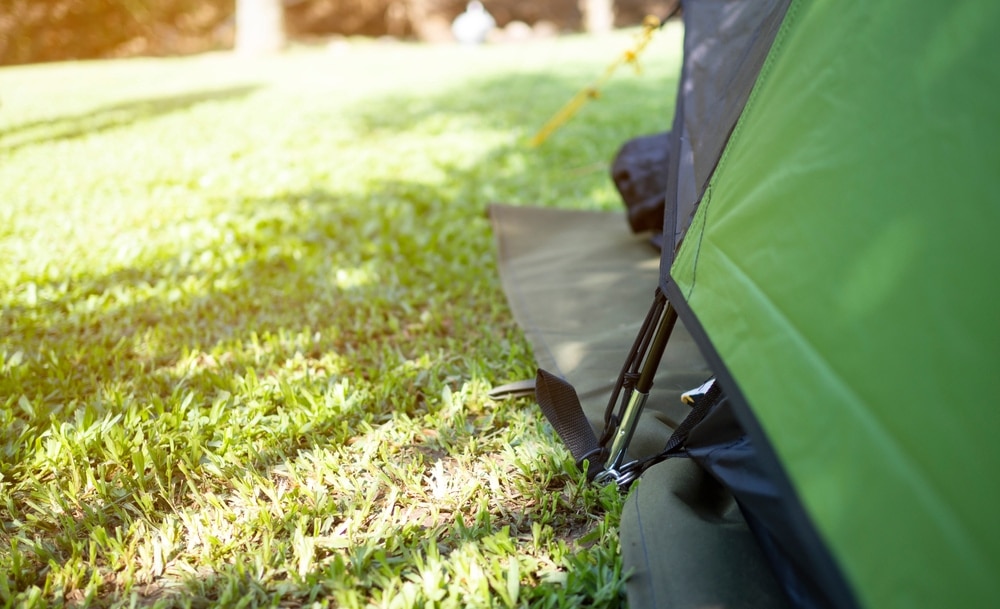
Once you decide whether using a tarp under your tent is the right solution for your needs, it’s time to figure out what ground cloth you actually want to buy. While tarps might seem like very simple pieces of gear, there’s actually a whole lot that goes into selecting one for your adventures.
Here’s what you need to know.
Tent Footprints vs Tarps
First things first, we should mention that there’s a real difference between tarps and purpose-built tent footprints.
While tarps, such as the B-Air Grizzly Tarp, are affordable and durable, they’re generally best for car camping. That’s because they tend to be quite heavy and bulky, which is less than ideal for backcountry pursuits.
Alternatively, if you’re heading into more remote terrain on a tent camping excursion, a tent footprint might be more appropriate. Most tent footprints are made from high-end materials like ripstop nylon, making them lightweight and packable.
Tent manufacturers usually make a selection of different footprints for their line-up of tents. So, if you’re interested in getting a proper ground cloth, we recommend starting with your tent manufacturer’s offerings. If you can’t find anything that’s to your liking, you might also consider the ALPS Mountaineering Tent Floor Saver, which comes in multiple sizes for use with any tent.
- Provides moisture and a dirt barrier
- Available in different sizes
- With webbing loop corner attachments
What Size Tarp For Tent Protection?
A tarp is only useful if it’s appropriately sized for your tent. Choose a model that’s too small, and it won’t provide the protection you need on the trail. On the other hand, if you opt for a model that’s too big, you’ll end up carrying around more weight and bulk than you need.
Unfortunately, there’s a bit of a debate over what size tarp you actually need to tent protection. While some folks argue that your ground cloth should be slightly smaller than the size of your tent, others think it should be slightly larger.
At the end of the day, though, the ideal tarp size for your tent is the size of the tent itself. While a few inches here or there won’t make a huge difference, finding a tarp that’s about the size of your shelter is ideal.
The key point here is that you don’t want a tarp that’s substantially larger or smaller than your tent. If your tarp is too large, it could actually collect water and cause a pool of water to form under your shelter. Alternatively, if your tarp is too small, it won’t offer enough protection for your gear.
That being said, if your tent is a unique shape, you might be better off getting a purpose-built ground cloth. Manufacturers will make ground sheets that are perfectly cut to fit their tents, which makes them the ideal choice in wet environments.
Simple Tent Footprint Ideas: DIY Tent Ground Cloths
Not keen on the idea of carrying around a bulky tarp or spending quite a bit of money on a ground cloth? You’ll be happy to know that there’s an alternative to your woes, namely a DIY tent ground cloth.
In fact, you can often make your own ultralight tent footprint for way cheaper than anything you could buy in a store. Doing so can also help ensure that your footprint is perfectly sized for your tent. Of course, creating a tent footprint does require a bit of effort, but it’s well worth it if you want a fully customized ground sheet for your adventures.
Here’s what you need to know:

Materials for a DIY Tent Ground Cloth
If you want to make your own ground cloth, your first step is to decide what materials you want to use. Although you have a number of choices, there are two materials that stand out from the rest:
- Painter’s Tarp. Plastic painter’s tarp sheets, like Top Green Plastic Painting Drop, are a cost-effective and lightweight option that works well in nearly any environment. The downside to painter’s tarp is that it’s not particularly durable, so you’ll need to make a new ground sheet fairly frequently.
- Made of 100% durable polythene, odorless and recyclable
- High transparency and tear-resistant
- Pack includes 3-pack 9 ft x 12 ft (274 cm x 365 cm) clear plastic
- Tyvek. If you’re willing to spend a bit more upfront on your custom ground cloth, Tyvek is a sure bet. Tyvek is the extra-durable synthetic fabric that’s used to make everything from express mail envelopes to kites. It’s naturally waterproof, lightweight, and abrasion-resistant, which makes it the ideal ground cloth fabric. Of course, it costs more than painter’s tarp, but it’ll last a whole lot longer.
- Protects your tent floor from rocks and sticks
- Sturdy and lightweight
- Measures 84 in x 36 in (213 cm x 91 cm)
Once you figure out which material you’d like to use, it’s time to cut your ground sheet down to size. The easiest way to do this is to pitch your tent on top of your painter’s tarp or Tyvek, then trace an outline of your tent onto the material. Then, you simply need to cut the tarp or Tyvek down to size and, voila!, you have a ground sheet.

Share this Image On Your Site
<a href="https://outforia.com/do-i-need-a-tarpaulin-under-my-tent/"><img style="width:100%;" src="https://outforia.com/wp-content/uploads/2021/02/DIY-Tarp-683x1024.png"></a><br> Do I need A Tarpaulin Under My Tent Infographic by <a href="https://outforia.com">Outforia</a>Adding Grommets

If you want to take things a step further, you can also add grommets to your ground sheet. Doing so provides you with extra tie-down options should you want to anchor your tarp to the ground. It also turns your ground cloth into a multi-purpose tarp that you can use as an emergency shelter if the weather turns sour.
Adding grommets to your tarp might sound complicated, but it’s actually a fairly straightforward process. The best way to do so is to invest in a grommet kit, like the Coughlan’s Grommet Kit. These little kits come with an assortment of 3/8 grommets as well as a cutting tool, which helps you add them securely to your tarp.
- Brass plated grommet
- Kit includes 20 grommets, cutting tool, insert punch, and setting die
For some guidance on how to install grommets using this kit, check out this video from the folks at Getting There Green:
The Verdict
Ultimately, there’s no requirement that you need to use a tarp under your tent. But, packing a ground cloth on all your camping trips can help keep you dry in a storm and extend the lifetime of your shelter.
FAQs
Does It Matter Which Type Of Tarp/Ground Cloth I Use?
The type of tarp or ground cloth that you use for camping does matter when it comes to the portability and packability of your gear. However, while purpose-built ground cloths and DIY models tend to be lighter than proper tarps, there’s not much of a difference in terms of performance.
So, if weight savings are important to you, it might be best to use a ground cloth from your tent manufacturer or you might want to make your own. Alternatively, if affordability and durability are your main concerns, a regular tarp might be best.
How Thick Should A Tarp Be Under A Tent?
There’s no minimum thickness for ground cloths, however, anything thicker than about 2mm should be sufficient. Do keep in mind, though, that the thicker your tarp, the heavier and bulkier it is in your pack. So, you’ll need to strike a balance between durability and packability in your tarp.
Where Can I Buy Custom Sized Tarps?
You can buy custom sized tarps online at a number of major retailers, such as TarpsNow.
Alternatively, you can actually make your own custom sized tarp by cutting up a large sheet of painter’s tarp or Tyvek, which you can buy online or at a hardware store. Making your own simple tent footprint is often cheaper than buying a custom tarp, though doing so requires about an hour of your time.
Why Does My Tent Get Wet Inside?
Tents can get wet inside for one of two reasons. The first reason is that your tent hasn’t been pitched properly (or that it ripped) and rain or snow has gotten inside. To remedy this situation, you’ll want to ensure that your tent is free of holes and that your rainfly is taut at all times.
That being said, the more likely reason is that your tent is wet inside because of condensation that’s built up overnight. In these situations, you’ll want to make sure that your tent is well ventilated to prevent moisture build-up as you snooze.




